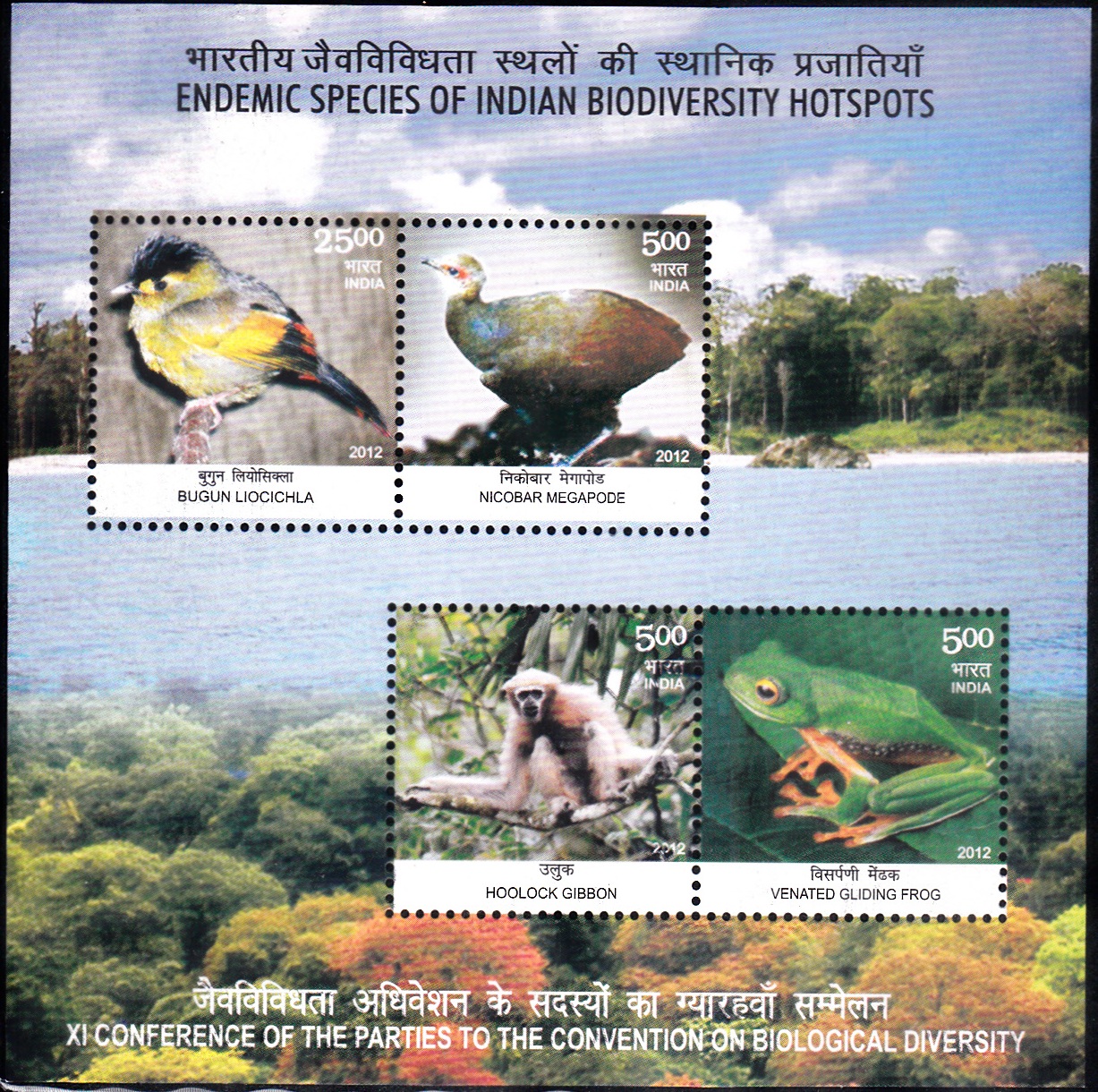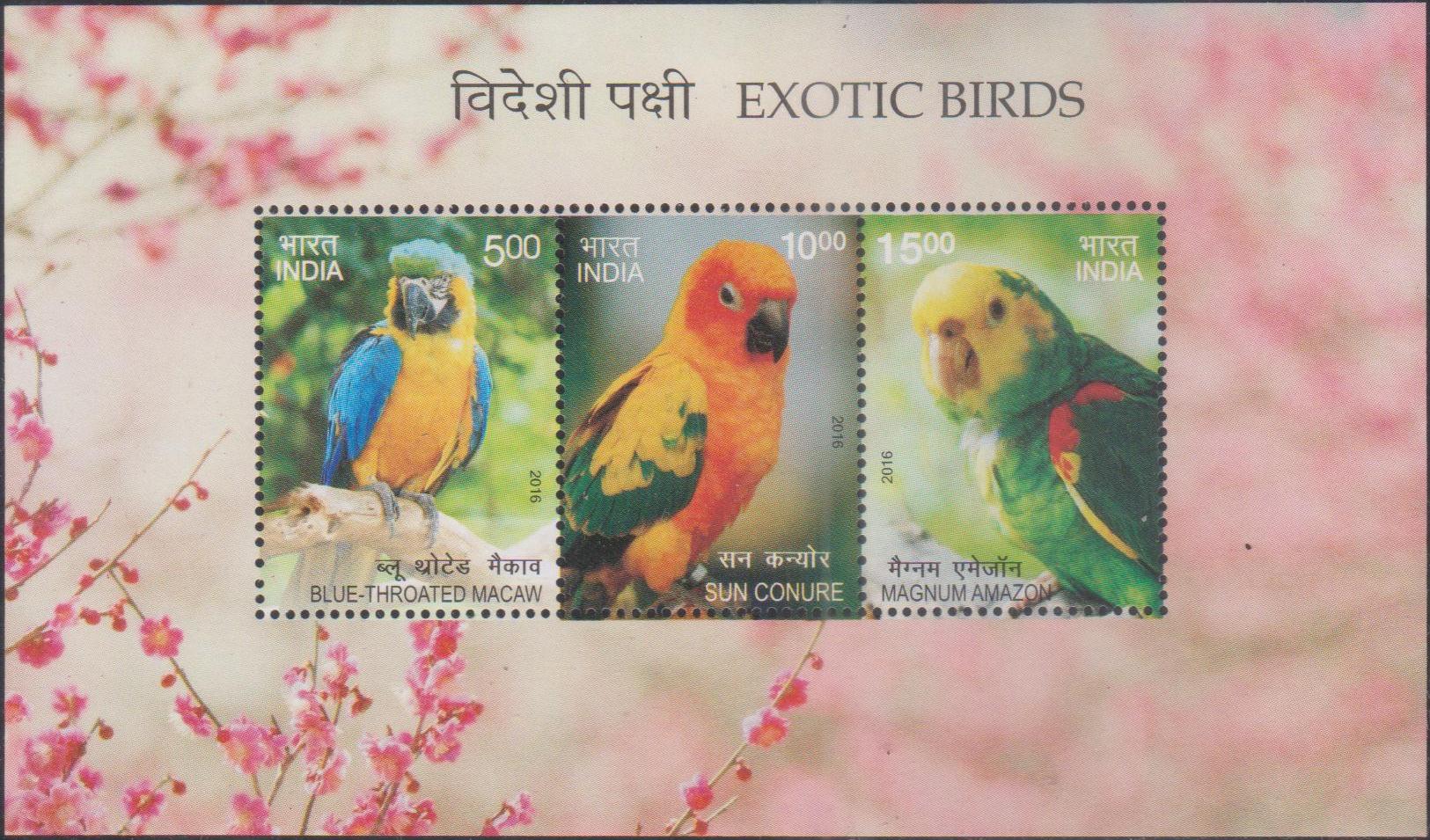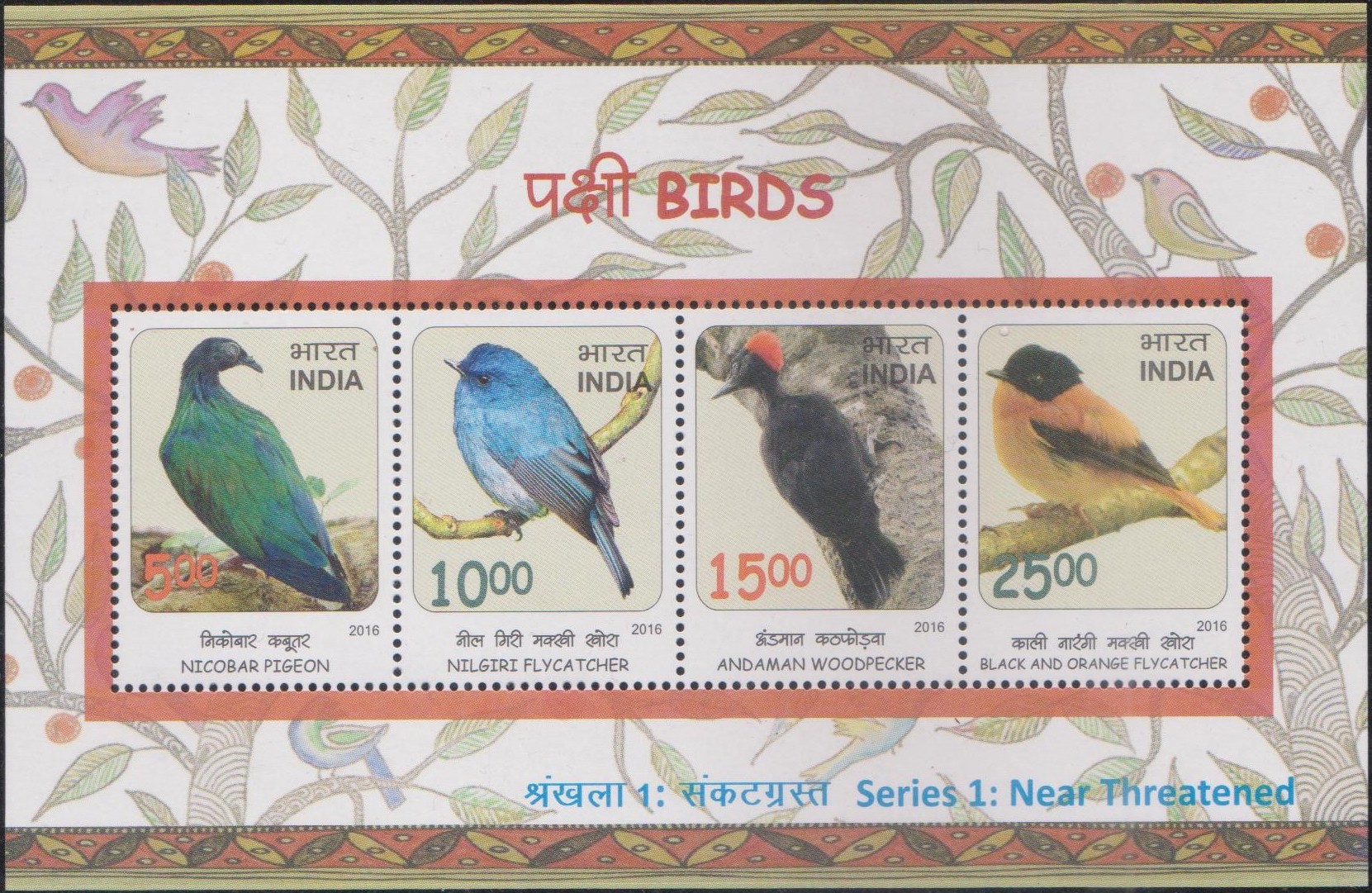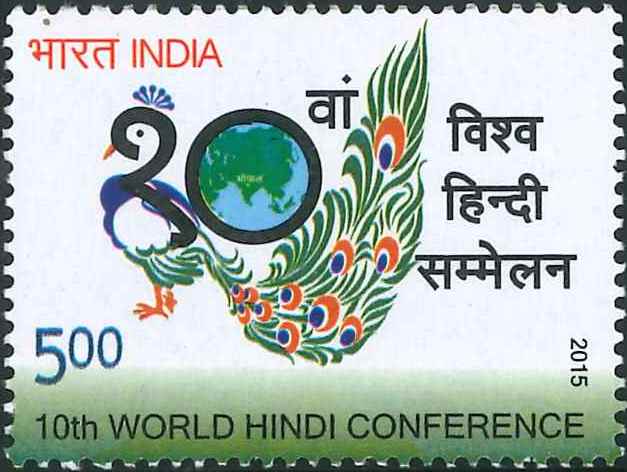
Mangroves of India
A miniature sheet consisting of 4 nos of postage stamps on the 8th Session of the Conference of the Parties to the United Nations Framework Convention on Climate Change :





 Issued by India
Issued by India
Issued on Oct 30, 2002
Issued for : India hosted the Eighth Session of the Conference of the Parties (COP-8) to the UN Framework Convention on Climate Change from 23rd October to 1st November 2002 at New Delhi. The Convention strived to prevent the likely dangerous effects of human interference with the climatic system by stabilising the greenhouse gas concentrations in the atmosphere. The Department of Posts was happy to associate itself with the COP-8 by issuing a set of four stamps to commemorate the event. The stamps, significantly, portray the mangrove ecosystems whose survival is under threat from the effects of climate change.
Design : The four species of mangroves which figure on the stamps are Rhizophora mucronata, Sonneratia alba, Nypa fruticans and Bruguiera gymnorrhiza. The first day cover carries an abstract work of art by Kamleshwar Singh, through which the artist conveys the message that there is a need to change our thinking and behaviour before the climatic changes set in and lead to calamities. It also carries the Conference logo.
Credits :
Stamp & FDC : Kamleshwar Singh
Cancellation : Alka Sharma
Type : Miniature Sheet, Mint Condition
Colour : Four Colour
Denomination : 500, 500, 500 & 1500 Paise
Overall size : 2.90 x 3.91 Cms.
Printing Size : 2.90 x 3.91 Cms.
Perforation : 13.5 x 13.5 mm with elliptical hole on each 39.1 mm sides
Paper : Matt Chromo
Stamps Printed : 3 million Each
Number per issue sheet : 40
Printing Process : Photo Offset
Printer : Calcutta Security Printers Ltd.
About :
- Mangroves are spawning and nursery grounds for a variety of fish, shrimps, crabs, oysters, and crocodiles. They are also feeding and nesting grounds for many sea birds and home to other wildlife. They provide us fuel, fodder, timber, charcoal, tannin and paper-pulp. There are large human communities which directly or indirectly draw their livelihood from them. Mangroves are a unique biological phenomenon because they survive water logging, poor soil aeration, salinity, high humidity, and strong winds. India is home to some of the most spectacular mangroves of the world. These are located in the alluvial deltas of rivers such as the Ganga, the Mahanadi, the Godavari, the Krishna and the Cauvery as well as on the Andaman and Nicobar Islands. The Sundarbans of West Bengal represent the largest stretch of mangroves in the country. They are rich and diverse, and support a variety of animals – amphibians, reptiles, fishes, mammals (like tiger, dolphin and porpoise) and thousands of species of invertebrates. Thirty mangrove areas in the country have been identified for extensive conservation and management. About 65 species of true mangrove and associated plants are found in India.
- Under the United Nations Framework Convention on Climate Change (UNFCCC), the developed country Parties are expected to reduce the emission of greenhouse gases in the atmosphere as well as assist the developing country Parties in tackling the problem of climate change. The COP-8 in New Delhi was a reiteration of India’s commitment to sustainable development. Energy efficiency and conservation, promotion of renewables and the building-up of natural resources and forests are key aspects of India’s initiatives for sustainable development.
- Text : Based on material furnished by the sponsors.








[…] the cold high altitude forests to the steaming coastal mangroves of Sunder-bans, from the scorched arids of the west to the lush evergreens in the south and from […]